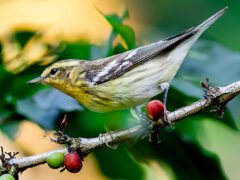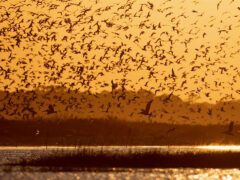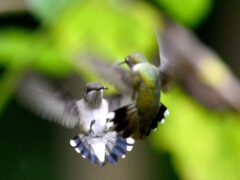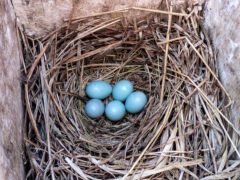A round-bodied game bird with a small head, short tail, rounded wings, and short, strong legs. Two distinctive plumes stick up off the head like the feather of a quill pen, longest in adult males.
Relative Size
Slightly larger than a California Quail, smaller than a Gray Partridge.

 between robin and crow
between robin and crowMeasurements- Both Sexes
- Length: 10.2-12.2 in (26-31 cm)
- Weight: 7.4-9.2 oz (210-262 g)
- Length: 10.2-12.2 in (26-31 cm)
- Weight: 7.4-9.2 oz (210-262 g)













